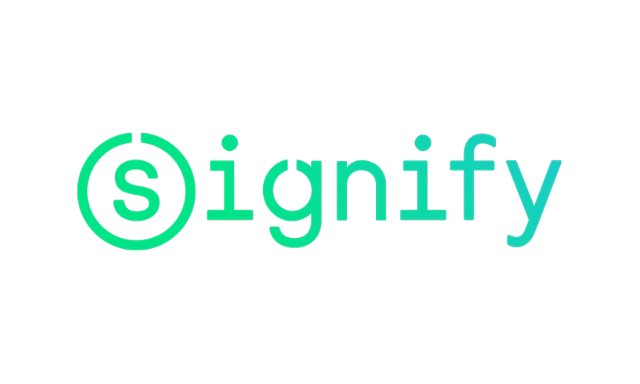Signify are a world leader in lighting. They are unlocking the extraordinary potential of light, providing professional customers and consumers with connected lighting offerings that bring both light and the data connectivity.
We spoke to Musa Unmehopa, Head of Ecosystems and Strategic Alliances at Signify, and got his views on the progress of Signify and the development of the light communication ecosystem.
Who are Signify and what role do you play in the light communication ecosystem?
Signify is the world leader in lighting for professionals and consumers and lighting for the Internet of Things. Our Philips products, Interact connected lighting systems and data-enabled services, deliver business value and transform life in homes, buildings and public spaces. Trulifi by Signify is the perfect solution for light communications. It’s a range of LiFi systems, providing two-way wireless communications that provides consistent high-speed connectivity, unique physical security and has low latency for real time data streaming. Trulifi underlines our strategy to unlock the potential of light to address new high-growth markets. Through our global presence, large installed base and industry knowledge, we’re helping existing and new customers to leverage their existing and future lighting infrastructures to receive reliable, secure, high-speed wireless communication.
What do you think the future holds for light communication?
Our focus is on the present, the future starts now. LiFi has progressed and ripened in research and academia for years. And while we will continue to see exciting technological advancements in our labs, in terms of transmission speed, use of novel materials, etc., the base LiFi technology is ready for mainstream deployment. Commercial deployments are being rolled out today to address real-life use cases in key market segments. We believe initial LiFi deployments will focus on those use cases where RF-based wireless communications poses a challenge, either due to physical or legislative constraints. And subsequently, as the RF spectrum becomes increasingly scarce and congested, LiFi will evolve into a mature complementary technology next to Wi-Fi and 5G/6G.
What successes have you enjoyed recently as a business in light communication?
We see great and increasing momentum. As part of some of our recent wins, we have installed Trulifi 6016 for outdoor use in the Dutch air force to enable wireless connectivity where radio is not an option. World forum in The Hague uses Trulifi 6002 office solution to provide their customers with secure and reliable connectivity without running the risk of eaves dropping in highly sensitive situations. Orange Luxembourg use Trulifi in their major store to demonstrate the potential of LiFi in the consumer market. Also, already four schools in Belgium (three in Wallonia and one in Brussels) have installed Trulifi by Signify, following successful installations in schools in Italy, Germany, the US and the Netherlands.
What are the key developments you would like to see in the light communication ecosystem?
To enable the LiFi market to grow to its full potential, it is essential that the standards-based, multi-vendor ecosystem continues to expand. A key development will be miniaturization as a key step towards integration into consumer end devices. For this, we need a stable standard with available silicon, and an interoperability certification program. The ITU-T G.9991 (G.vlc) standard in conjunction with the tried and tested certification program of the HomeGrid Forum, as well as chipsets that have been commercially available now for several years, provide the necessary conditions for the LiFi ecosystem to thrive. Trulifi by Signify has embraced this standard throughout its portfolio.


